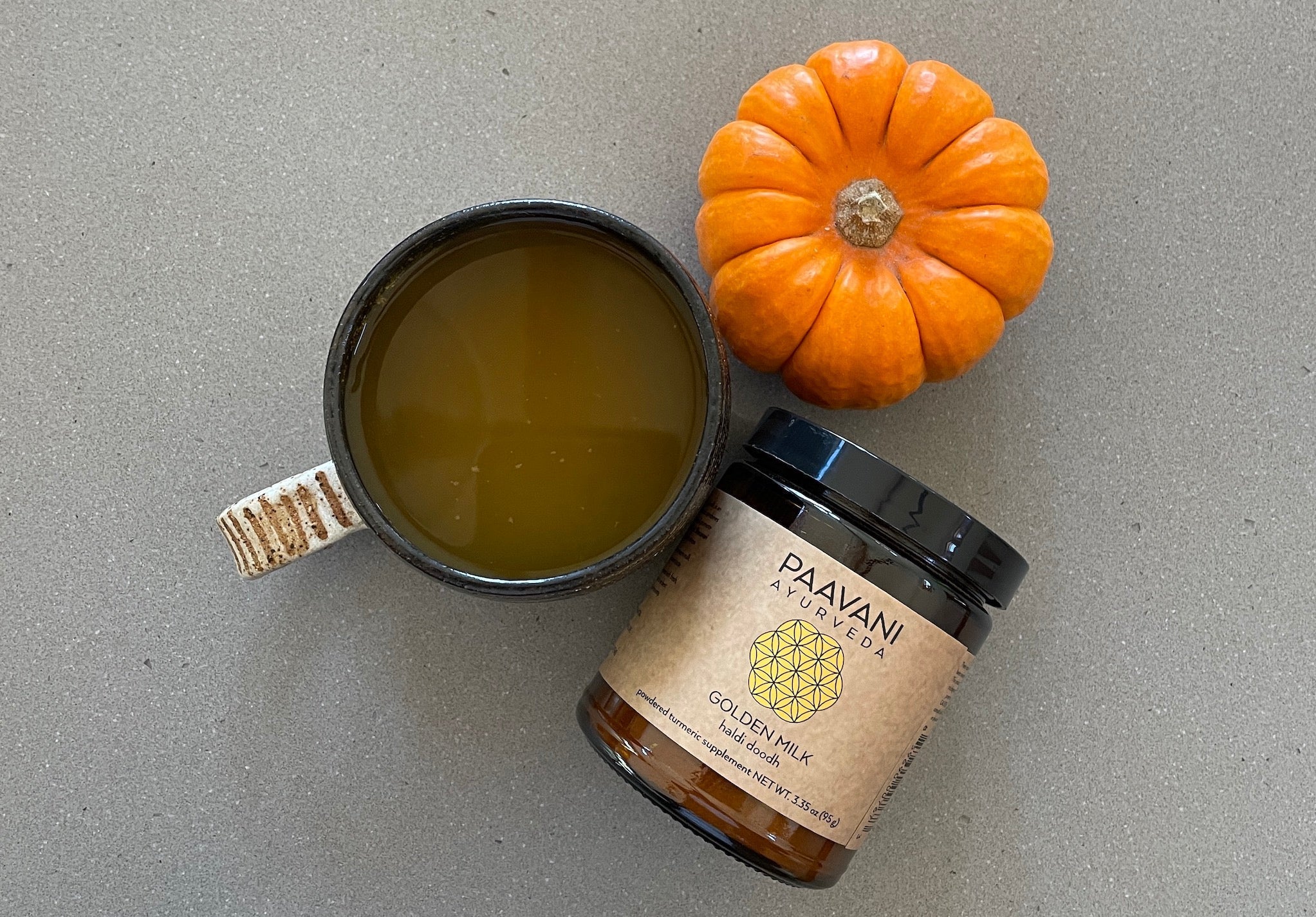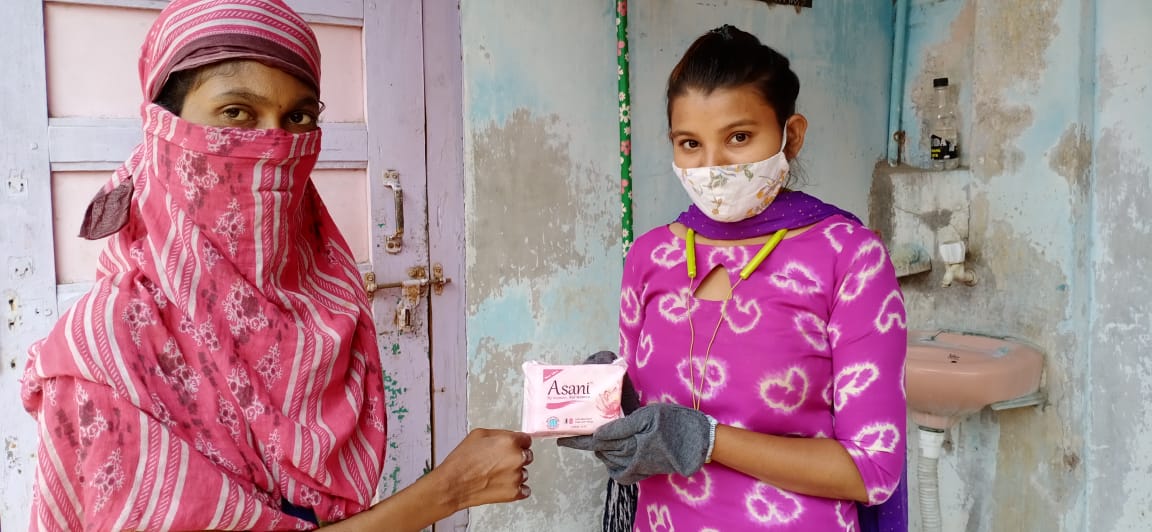
Healthy Vata Digestion for Fall & Early Winter
During the fall and early winter months, the light, cold and dry qualities of vata dosha have the potential to disrupt the body and mind’s equilibrium. In fact, out of all of the doshas (vata, pitta and kapha), it is vata dosha that is the easiest and quickest to go out of balance due to its mobile and light nature. Thus, just as the autumn winds strip away the dry, dead leaves hanging on the tree’s branches, vata dosha, which can be thought of as the wind energy within each of us, has the potential to deplete our body, our skin and/or our ability to withstand stress. Let’s take a deeper look at how this can manifest...
Ayurveda identifies the following disturbances that can occur in the digestive system due to an unhealthy increase in vata dosha:
- the presence of non-smelly gas, bloating
- variable elimination
- constipation
- undesired weight loss
- malabsorption
When there is excess vata in the body and/or mind, this is can be reflected in the skin as:
- dryness
- cracked lips
- premature wrinkles
- a grey skin tone
- skin is cool to the touch
- uneven skin tone
- blackheads
Excess vata in the mind can present as:
- anxiety
- fear
- overwhelm
- indecisiveness
- trouble staying focused
Since Ayurveda is a holistic medicine, it is crucial to look at how our lifestyle choices have an effect on our internal bodies, skin and emotions. One of the best ways to establish health in the body, stability in the mind and also reveal your glowing skin, is to commit to a daily routine, known in Ayurveda as dinacharya. Carving out time for self-care and space to just be is critical for all of us (especially for vata types and those experiencing an imbalance in vata dosha) and Ayurvedic medicine has specific daily rituals that help to foster a deeper mind-body connection.
Eating foods that are supportive to your unique needs is a part of the dinacharya protocol. Thus, if you are experiencing an increase in vata dosha, a vata pacifying diet can help bring in the moisture, nourishment and warmth you need to feel your best. Below we have compiled a list of our favorite vata balancing tips for healthy digestion as well as some vata balancing foods for fall.
Recommended Foods & Tips for Healthy Vata Digestion
Stoke Your Agni
The mobile nature of vata can create excessive wind-like energy in the digestive tract that disrupts agni (also known as your digestive fire). When this happens, agni oscillates between two extremes: stoking the digestive fire incessantly, making agni too strong or, alternatively, it can weaken the digestive fire or put it out completely. When this happens, a person can experience a variable appetite, swinging from feeling hungry one day to skipping meals and snacking the next. Variable elimination can also be experienced meaning that one day loose stools can be the norm and then the next day one could experience constipation or dry, hard stools. Additionally, the coldness of vata dosha, if left unchecked, can make it difficult for your GI tract to properly break down foods and assimilate and absorb nutrients, causing symptoms like gas, bloating, constipation and malabsorption to occur.
One of the best ways to stabilize and strengthen your agni in the face of the above vata type digestive disturbances is to incorporate a vata balancing digestive churna into your dinacharya. A digestive churna is a simple blend of powdered herbs that, when taken 30 minutes prior to each meal, can help to establish samagni or balanced agni. Our Vata Spice Blend is designed to counterbalance the cold nature of vata with warming herbs like ginger, cumin and cinnamon. The sweet taste of licorice root can also be found in this Spice Blend as it helps to promote the retention of moisture in the body, counteracting the mobile, dry nature of vata.
Support Digestion with Triphala
Restoring regular, daily bowel movements is a major component of returning vata dosha back to balance. Furthermore, if vata digestive upset is present, variable elimination is currently happening or if you are just plain constipated, Ayurveda has the perfect classical herbal formulation for you- Triphala! Triphala is a blend of 3 Indian fruits- haritaki, amalaki and bibhitaki. These fruits are dried and then turned into an herbal powder and can be consumed as a churna. Triphala has a superb range of health benefits which we outline in our blog, Triphala: the Superstar Superfruits of India, but what we want to highlight here is how effectively Triphala can help ease vata type digestive disturbances like gas, bloating and constipation. When taken over time (we recommend taking Triphala regularly for at least a 2-4 week period to see results) it can improve the consistency, frequency and quality of your bowel movements, overall supporting optimal daily detoxification of the body.

Favor Sweet, Sour and Salty Tastes
When you think of the sweet taste things like refined sugar, candy and juices might come to mind; however, the sweet taste has more dimension than that. The sweet taste can be experienced in foods like milk, rice, sweet potatoes, pumpkin, butternut squash, almonds, bananas, figs and even beef. All of these foods help to pacify vata dosha as they have an energizing, strengthening and soothing effect. The sweet taste also helps to moisturize the mucus membranes that can become dry when vata is high.
According to Ayurveda, the sour and salty tastes have the fire element within them. This means that they can help warm the cold nature of vata which has the tendency to weaken or deplete agni. The sour taste can be found in lemons, yogurt, sour cream, fermented foods, seaweed and vinegar. The salty taste is obviously found in salt and is also present in soy sauce, tamari, tuna and celery. Incorporating these tastes and foods in moderation into each meal is an excellent way to help strengthen and restore weakened agni.
Favor Warm, Cooked Foods Over Cold & Raw Foods
Ayurveda stresses the importance of favoring warm, cooked foods over cold, raw foods. This is because cooked foods are easier to digest than raw foods. Additionally, when seeking to balance excess vata dosha, we want to increase warmth while reducing coldness. Coldness can dampen agni and make it more arduous for the digestive system to properly break down, assimilate and absorb nutrients, while warmth can help kindle agni and maintain samagni. Generally speaking, during the fall and winter months, the avoidance of cold and raw foods is even more important because our bodies are already experiencing the coldness of the external environment. In conclusion, this vata season, we encourage you to warm yourself from the inside out by incorporating more stews, soups and nourishing, warm, cooked meals into your diet while avoiding raw foods like salads and other uncooked vegetables.

Favor Moisture Over Dryness
At this point, this recommendation seems like a given, right? Vata dosha is already inherently dry so if we add dry foods like crackers, popcorn, kidney beans and peanut butter into our diets, these foods can further push vata out of balance. Furthermore, this fall and early winter, if you are working to pacify vata dosha, we suggest avoiding dry foods and instead cooking your meals with healthy fats that are rich in moisture like ghee, sesame and coconut oils, as well as including foods like chia seeds, oatmeal prepared with milk (almond, oat or raw cow’s), sweet potatoes, avocado and wild caught salmon into your diet.
Favor Heavy Over Light
Have you ever noticed the difference between using a heavy versus lightweight blanket? Oftentimes a heavy blanket is able to ground and ease anxiousness or restlessness while a lighter blanket does not have the same effect. This same concept can be applied to foods that have a heavy quality versus a light quality. Root vegetables like carrots, beets, turnips, ginger, sweet potatoes and radishes harvested from within the earth’s soil carry a heavy, stabilizing energy that is beneficial when trying to ground the light nature of vata dosha. Foods that contain a lighter energy should generally be avoided during vata season or when working to pacify vata dosha. These include raw vegetables, chickpeas, lentils, kidney beans, coffee and green tea, to name a few.
As you can see, if you are working to balance excess vata dosha, favoring sweet, sour, salty, warm, moist and heavy foods will help you to achieve greater digestive balance. Alternatively, if you are experiencing NO digestive disturbances as of late, then throughout the fall and early winter months, Ayurveda recommends following a vata pacifying diet to honor the energy of these seasons. Thankfully, the chill in the air during this time of year naturally urges us to embrace these warm, grounding and nourishing qualities through the foods that we crave and the self-care rituals (dinacharya) that we inherently want to make more time for as an intrinsic way to restore and maintain healthy levels of vata dosha within the mind, body and skin. Ayurveda teaches us that food is medicine and that improper digestion is the root cause of all disease; therefore, it is clear that when we think of nourishing, self-care must extend into the kitchen through the spices, foods and tastes that are incorporated into each meal. We hope that you integrate these recommendations into your next meal plan and wish you optimal digestion and feelings of wholeness, stability and calm to strengthen your being and carry you through this season and into the colder winter months ahead!





Leave a comment
This site is protected by hCaptcha and the hCaptcha Privacy Policy and Terms of Service apply.